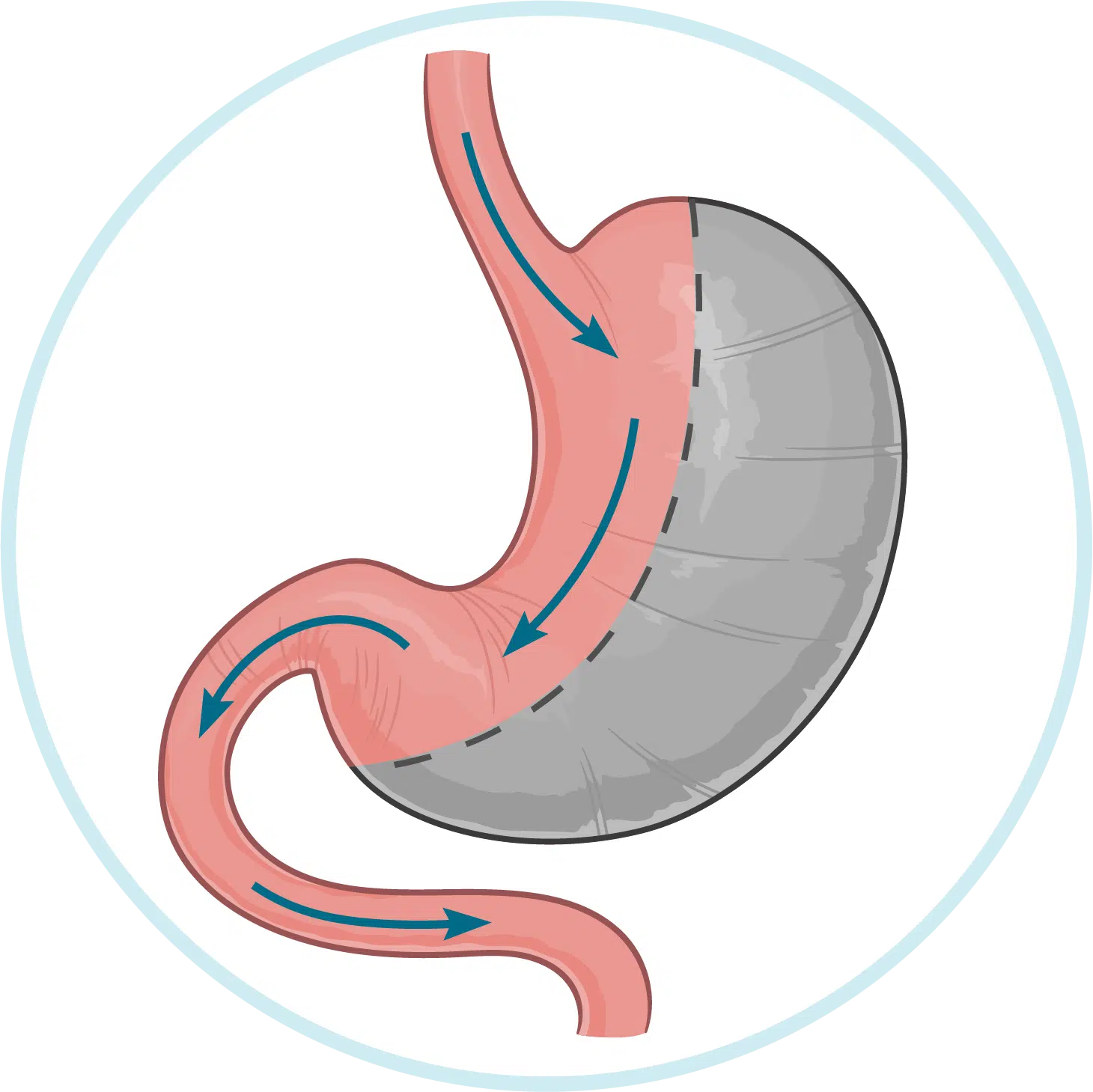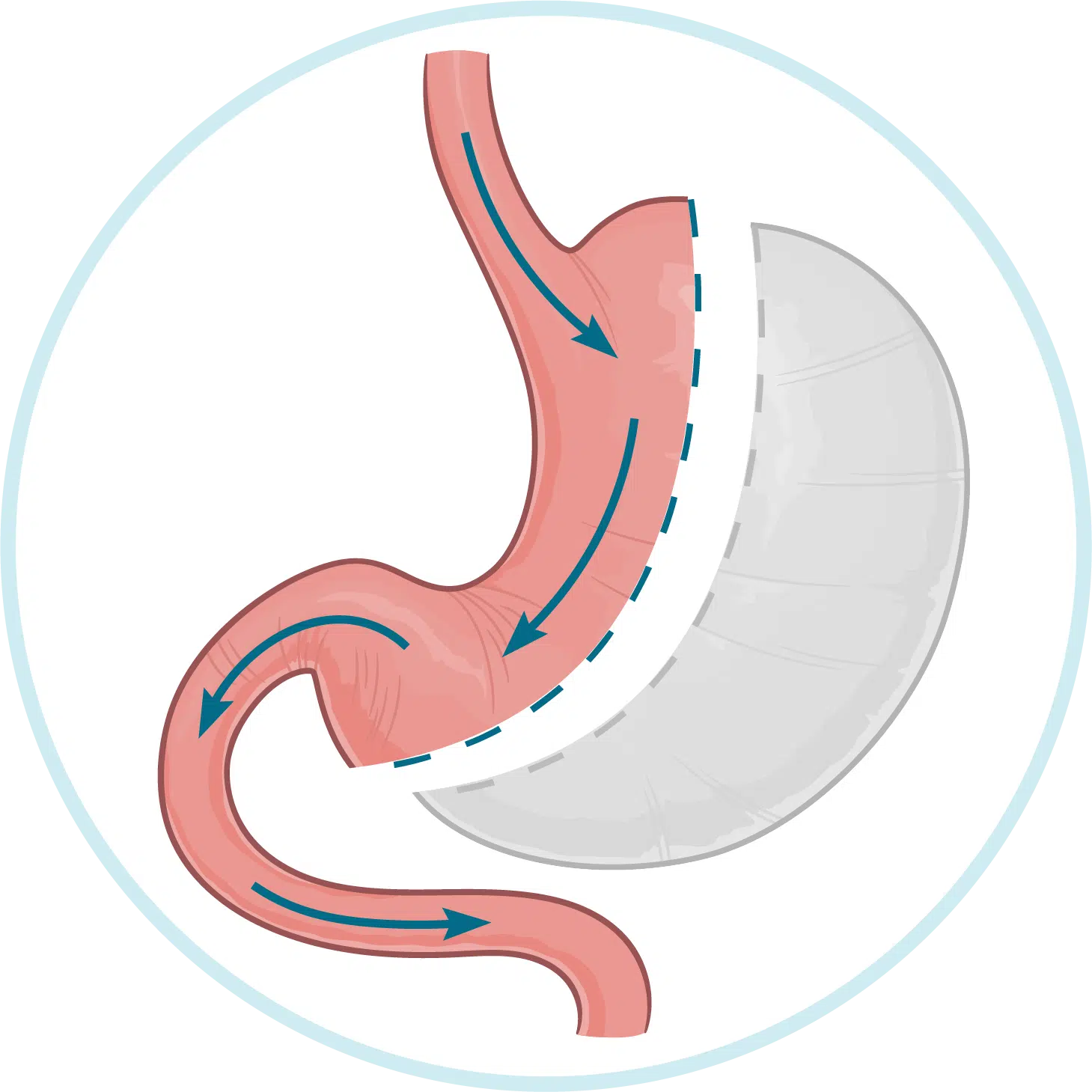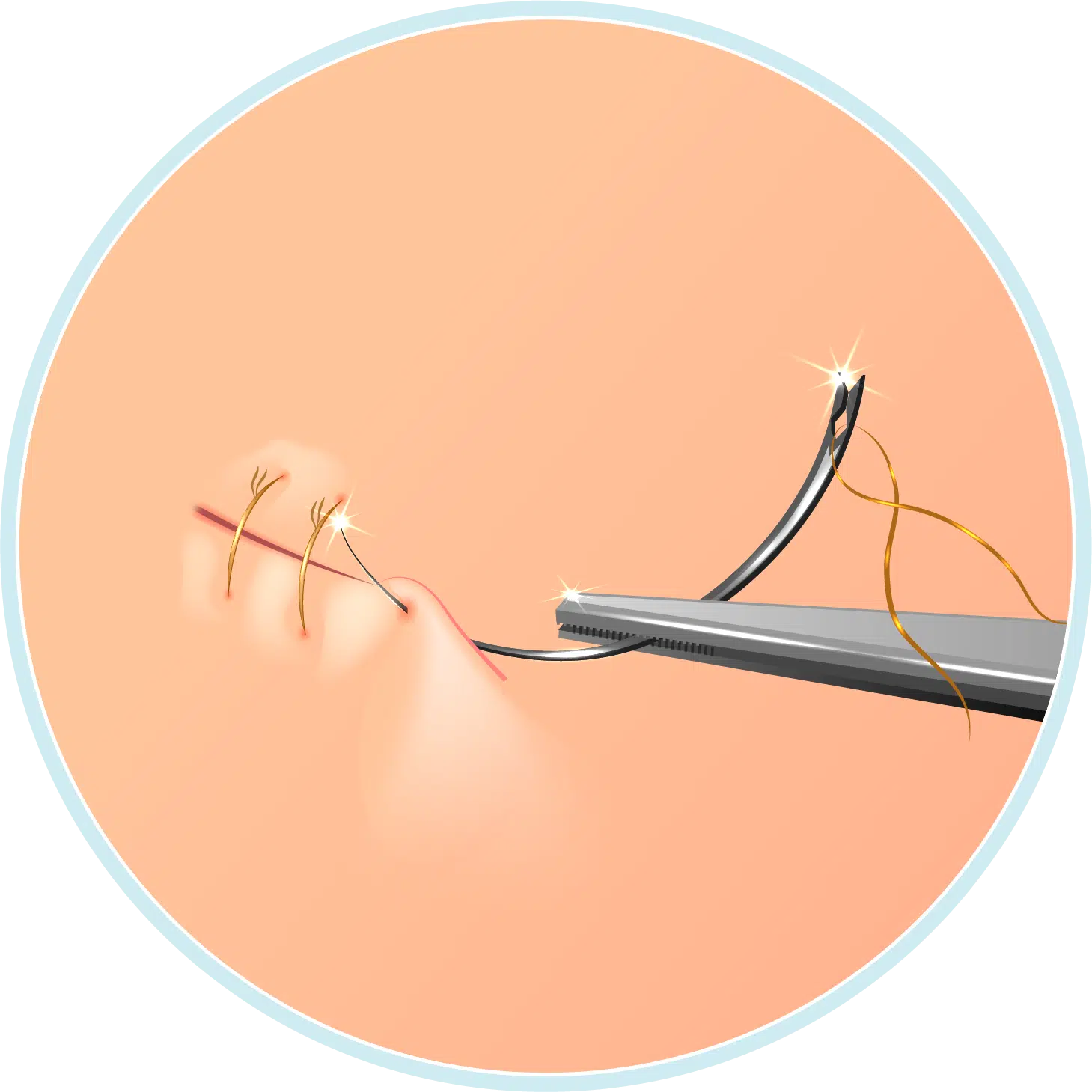Rapid and extensive weight loss without exercise or dieting is not a dream anymore! You can achieve this goal simply by undergoing a surgery called sleeve gastrectomy, which has gained noticeable popularity over the past ten years and becomes one of the most performed obesity surgeries in the world.
Sleeve gastrectomy, also known as gastric sleeve or vertical sleeve gastrectomy, is a weight loss surgery that limits the amount of food that you can eat by removing a large part of your stomach.
This is a restrictive surgery, but it doesn’t affect the absorption of nutrients. The demand for gastric sleeves is increasing steadily as more influencers and celebrities choose this option to battle obesity.

Sleeve gastrectomy (gastric sleeve) makes you feel full after eating a small amount of food, which leads to weight loss in the short and long term. Here are more benefits of this surgery:


Surgeons usually need between 40 and 70 minutes to complete the surgery. They also tend to use a laparoscopic approach, which entails making numerous tiny incisions in your belly to insert a long, thin tube with a small camera and light. The steps of sleeve gastrectomy include:

Your surgeon will put you under general anesthesia to allow you to sleep comfortably during the surgery. They may also connect you to a ventilator to facilitate breathing.

Next, your surgeon divides your stomach into two unequal parts and starts removing 80% of the outer part of your stomach.

The remaining 20% of your stomach will be sutured to form a banana-shaped organ.

Finally, your surgeon seals the external incisions and sends you to the recovery room for postoperative care.
Sleeve gastrectomy (gastric sleeve) is a relatively safe procedure, but it still carries some potential risks and side effects, such as:
Because they’re similar, you may be confused between gastric bypass and gastric sleeve. Check the following table to learn the main differences between the two procedures:
| Gastric Bypass | Gastric Sleeve | |
|---|---|---|
Goals | Your surgeon makes your stomach smaller by turning it into a small pouch and bypassing most of it and the first part of your small intestine. | Your surgeon removes about 80% of your stomach and sews the remaining part. |
| Complexity | Two-step procedure (more complicated) with longer recovery. | One-step procedure (less complicated) with faster recovery. |
| Results | Lose up to 80% of your excess body weight at a faster pace. | Lose up to 65 % of your excess body weight at a slower pace. |
| Risks | More risk of complications, especially malabsorption of nutrients. | Lower risk of complications, including dumping syndrome, but can cause acid reflux. |
| Anatomical Changes | Possible to be reversed but remains a challenging task. | Permanent and can’t be reversed. |
Click here to learn more about gastric bypass.
International Clinics helps international patients access affordable, high-quality medical and aesthetic procedures in Turkey.
Our team of consultants is here to answer your questions and provide guidance throughout your treatment journey.
Our partner hospitals and clinics have successfully performed thousands of procedures for patients from Europe, Asia, North America, and the Middle East.
Use the contact forms on our website to request a free consultation with our team. We’re ready to help you get the care you need.

It is one of the most successful and popular weight-loss surgeries.
The surgeon reduces the size of the stomach to a quarter of its normal size.
– Lose excess weight and getting rid of obesity.
– Prevent cardiovascular disease and high blood pressure.
– Prevent high cholesterol.
– Treat infertility due to ovarian cysts.
– Support diabetes treatment.
– Alleviate joint pain and knee stiffness after losing much weight.
The duration of the surgery is roughly 45 minutes, but you may need to stay one day in the hospital.
– Self-confidence and a feeling of wellness without obesity.
– Losing 40% of the original weight.
– Maintaining the ideal body weight.
– Avoiding complications of obesity, such as diabetes, high blood pressure, high cholesterol, and bone diseases.
– Eating large amounts of food during the first months after the surgery.
– Drinking soft drinks.
– Refusal to adhere to a healthy diet and exercise after the surgery to maintain its results.
– Refusal to follow up with the doctor.
